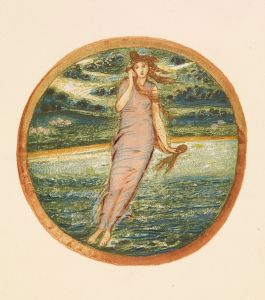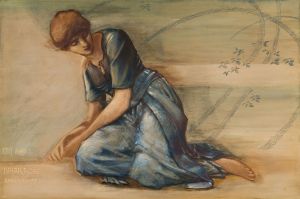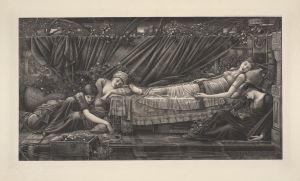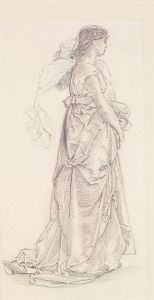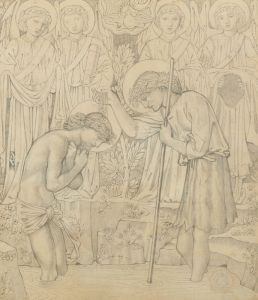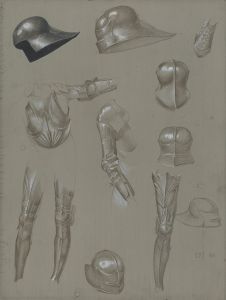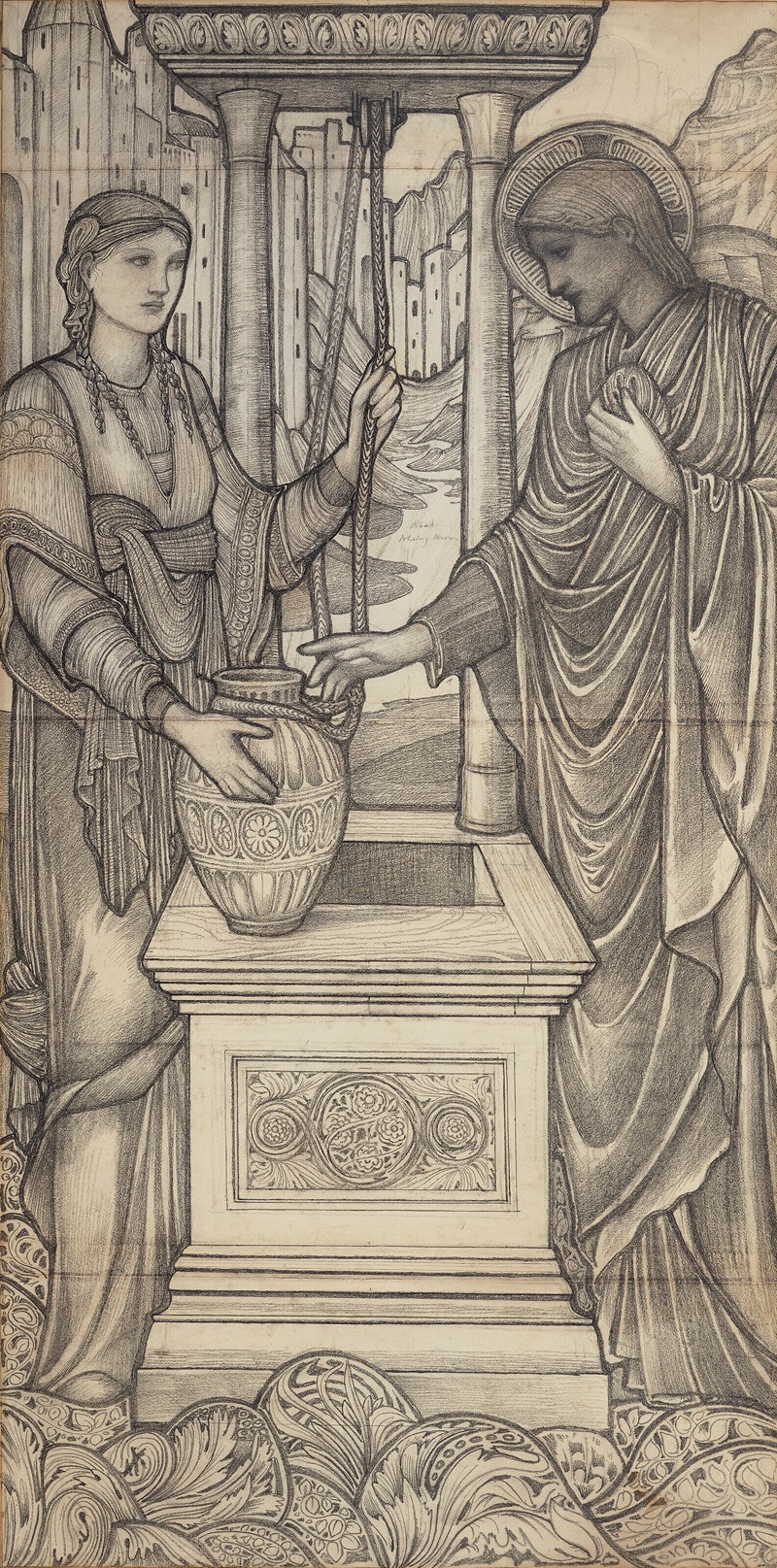
Christ and the Woman of Samaria at the Well
A hand-painted replica of Sir Edward Coley Burne-Jones’s masterpiece Christ and the Woman of Samaria at the Well, meticulously crafted by professional artists to capture the true essence of the original. Each piece is created with museum-quality canvas and rare mineral pigments, carefully painted by experienced artists with delicate brushstrokes and rich, layered colors to perfectly recreate the texture of the original artwork. Unlike machine-printed reproductions, this hand-painted version brings the painting to life, infused with the artist’s emotions and skill in every stroke. Whether for personal collection or home decoration, it instantly elevates the artistic atmosphere of any space.
"Christ and the Woman of Samaria at the Well" is a painting by the British artist Sir Edward Coley Burne-Jones, a prominent figure associated with the Pre-Raphaelite Brotherhood and the later Aesthetic Movement. Burne-Jones, known for his romantic and often medieval-inspired works, created this painting in the late 19th century. The artwork reflects his characteristic style, which often includes elongated figures, intricate details, and a dreamlike quality.
The painting depicts a scene from the New Testament, specifically from the Gospel of John, Chapter 4. This biblical narrative describes an encounter between Jesus Christ and a Samaritan woman at Jacob's Well. The story is significant because it highlights themes of compassion, redemption, and the breaking of social barriers, as Jews and Samaritans typically did not associate with one another during that time. In the account, Jesus speaks to the woman about "living water," symbolizing spiritual salvation and eternal life.
Burne-Jones's interpretation of this scene is notable for its emphasis on the emotional and spiritual exchange between the two figures. The artist's use of color, light, and composition draws the viewer into the intimate moment, focusing on the expressions and gestures that convey the depth of the conversation. The setting, while not explicitly detailed, suggests a timeless and serene environment, typical of Burne-Jones's approach to biblical and mythological subjects.
The painting is a testament to Burne-Jones's skill in blending narrative with aesthetic beauty. His work often reflects a deep interest in literature, mythology, and religion, and "Christ and the Woman of Samaria at the Well" is no exception. The piece is characterized by its harmonious color palette and the fluidity of the figures, which are hallmarks of Burne-Jones's style. The artist's attention to detail and his ability to convey complex themes through visual art have made this painting a significant example of his oeuvre.
Burne-Jones's work was influential in the late 19th century, and he was a key figure in the revival of interest in medieval and early Renaissance art. His paintings often explore themes of love, beauty, and spirituality, resonating with the broader cultural movements of his time. "Christ and the Woman of Samaria at the Well" exemplifies these interests and showcases Burne-Jones's ability to interpret religious stories with a unique and personal vision.
The painting is part of the collection at the Delaware Art Museum, which houses a significant number of works by Burne-Jones and other Pre-Raphaelite artists. The museum's collection provides insight into the artist's development and the broader context of 19th-century British art. Burne-Jones's legacy continues to be celebrated for its contribution to the aesthetic and cultural landscape of his era, and "Christ and the Woman of Samaria at the Well" remains an important work within his body of art.






